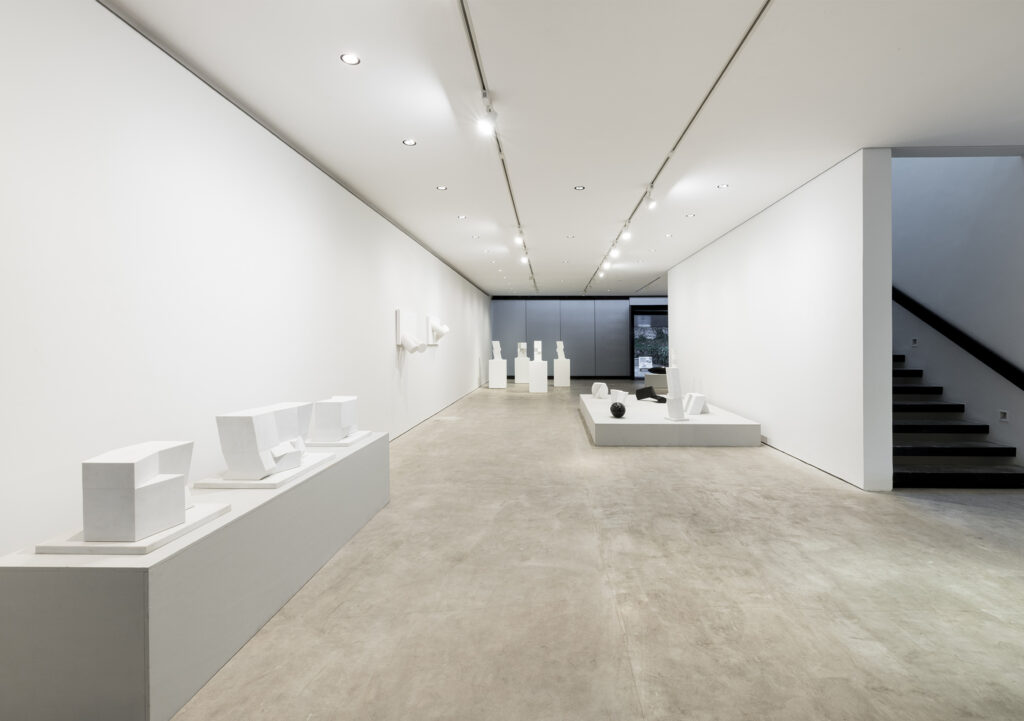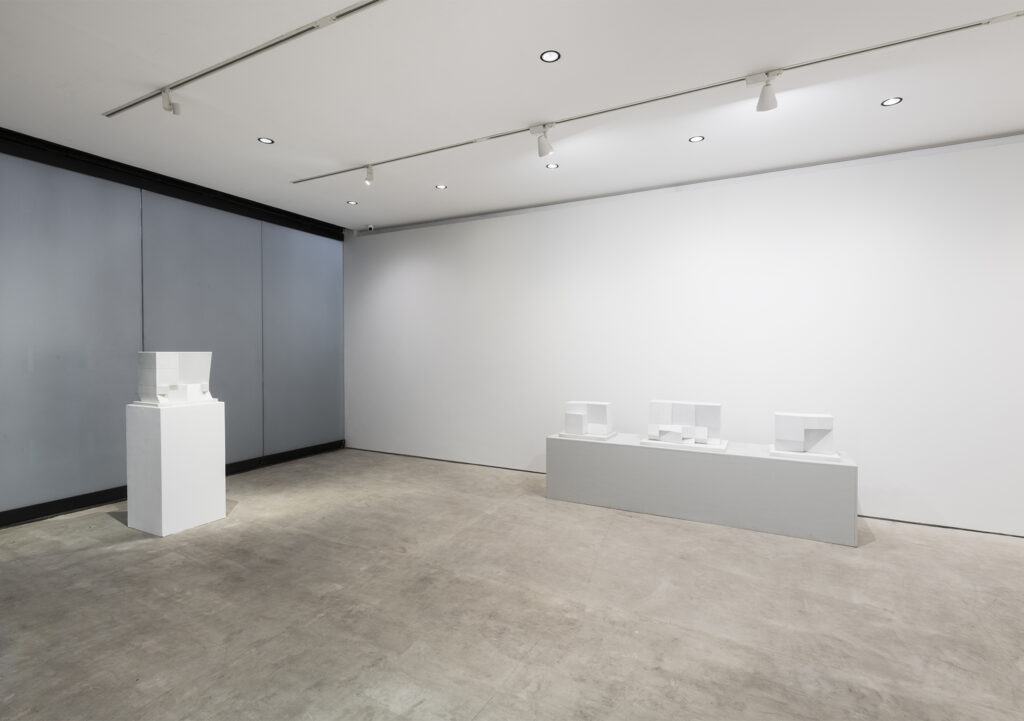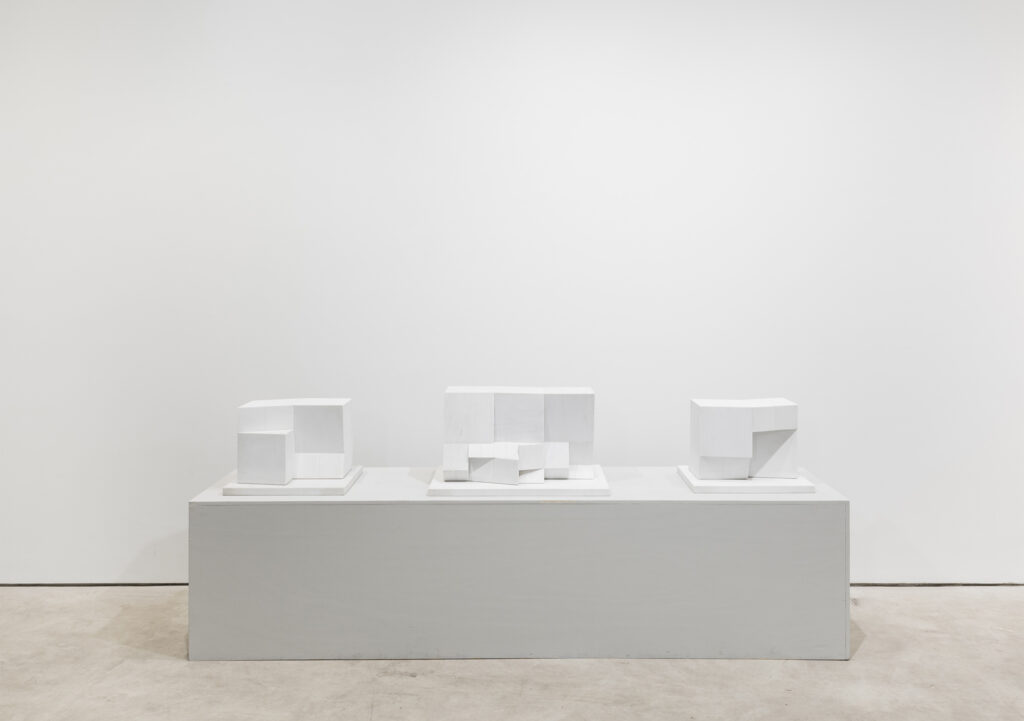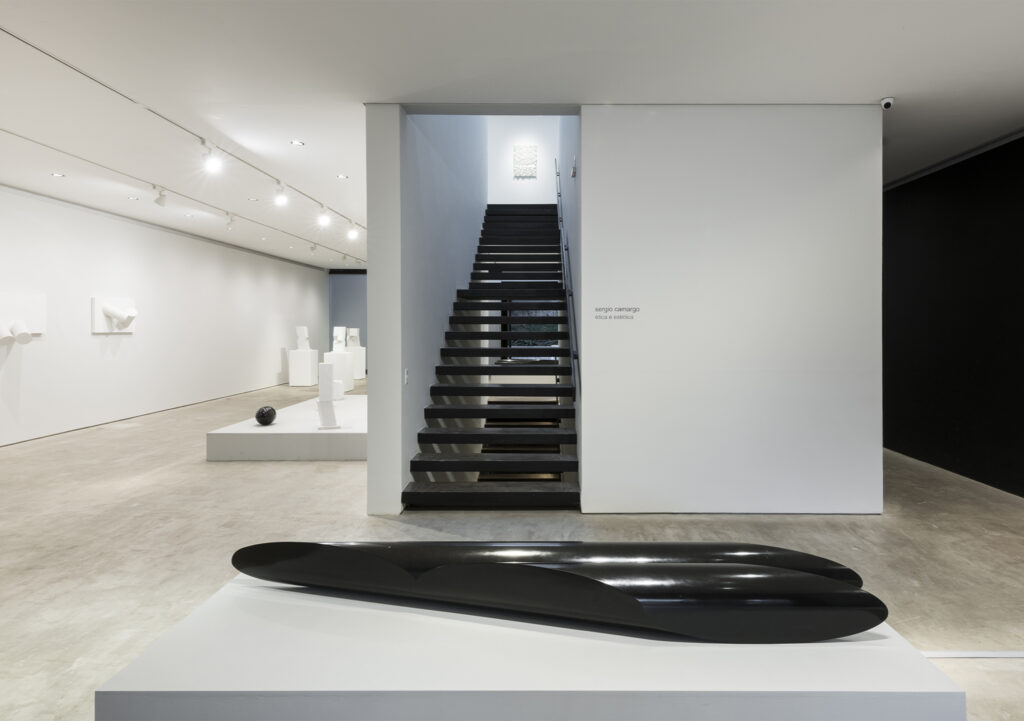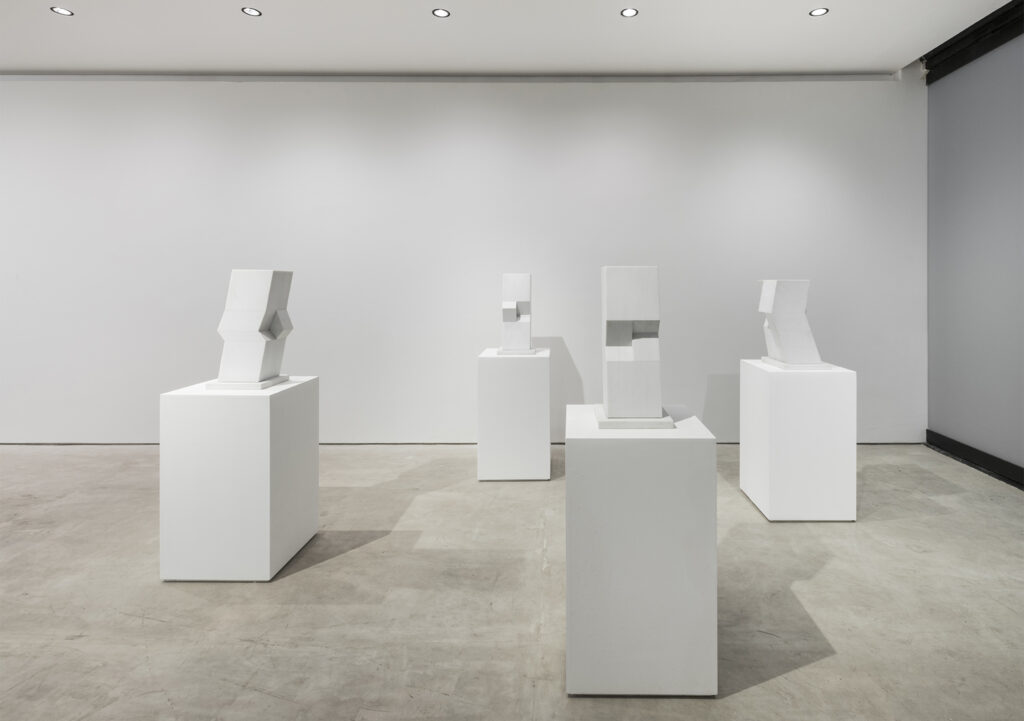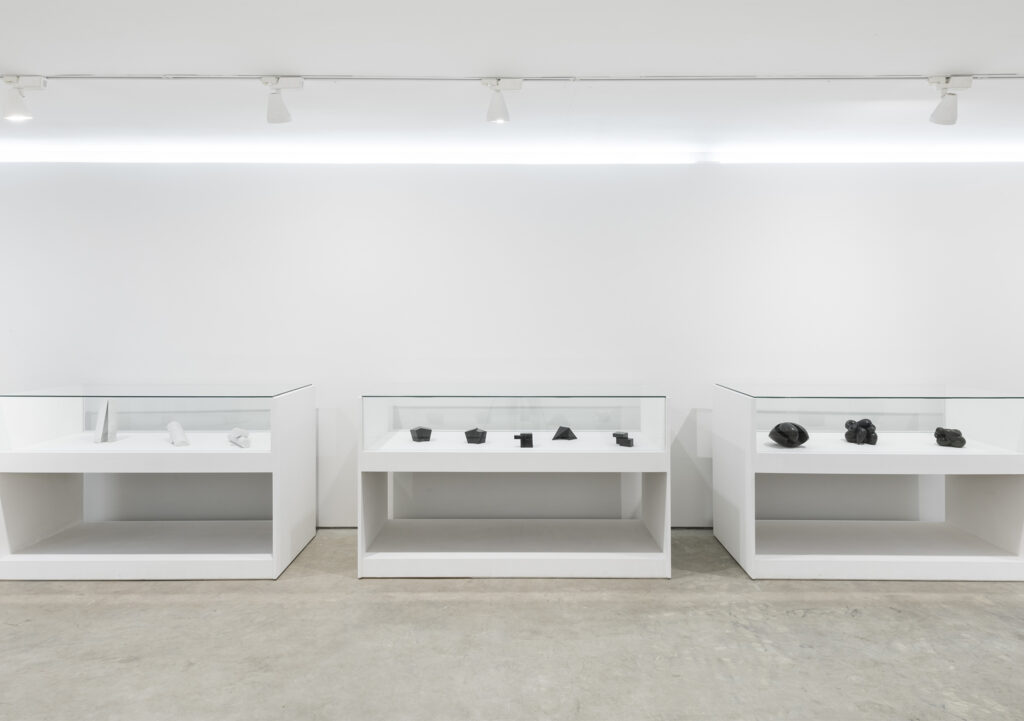sergio camargo_Ethics and Aesthetics
29 mar-17 may_2025
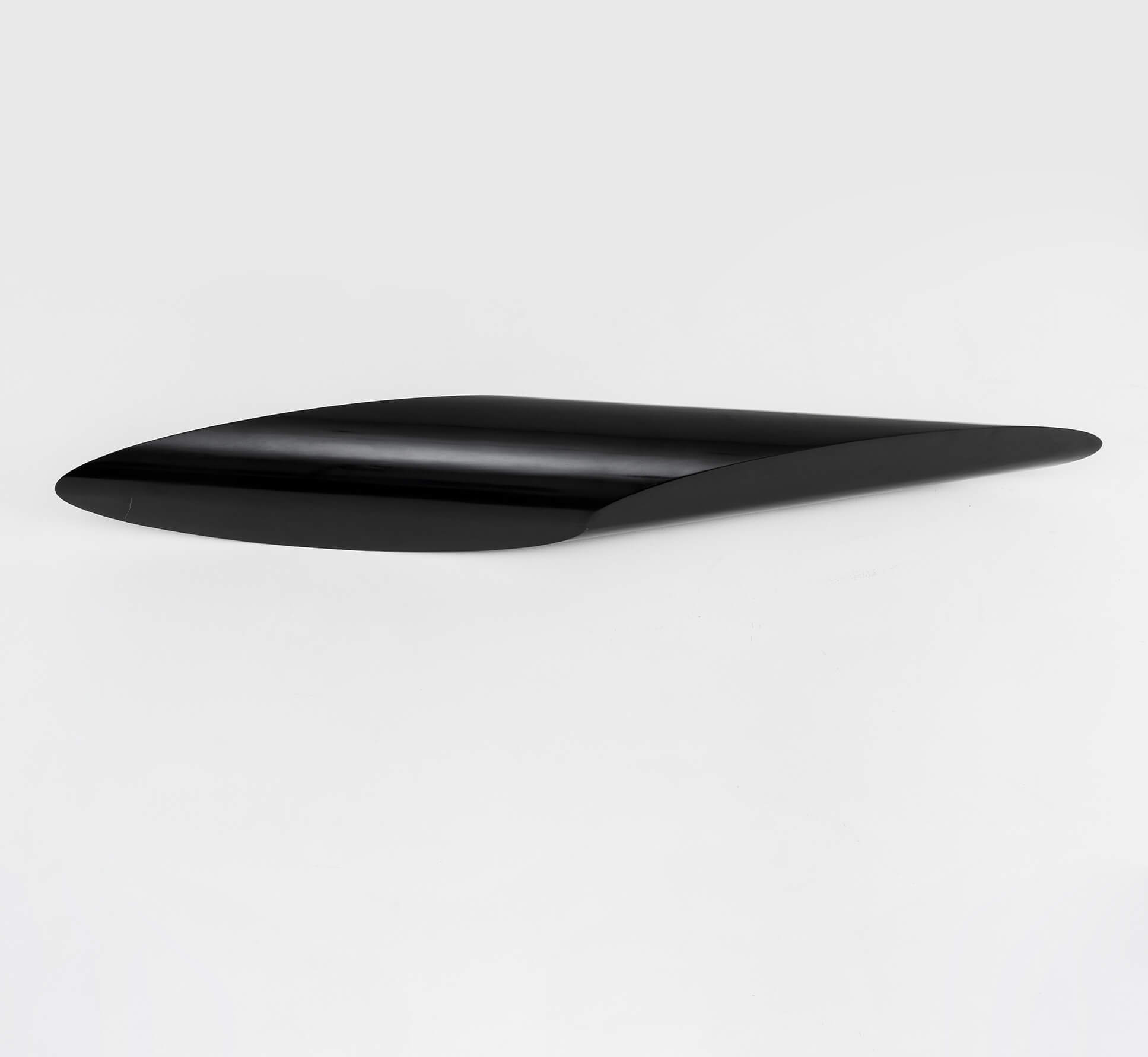
Ethic and Aesthetic
Ronaldo Brito
The fortunate way in which they enfold themselves — the geometric elements fitting together seamlessly, with nothing lacking and nothing superfluous, enhanced by the luster of marble or noir Belge — leaves no room for doubt: we are in the presence of modern classical sculptures. They possess that kind of timeless beauty immune to the passing of time, yet without any preconceived rules that might constrain their spirit of free exploration — each piece emerges from a methodical combinatory process that highlights dilemmas and paradoxes above all. Distant from concretist orthodoxy and its mechanical seriality, decomposing geometric figures according to a linear order, they also depart from the traditional morphology of Western statuary. Nevertheless, the marble remains, lending historical depth (and lyrical power!) to these abstract maneuvers, which defy the logic of figuration.
Sergio Camargo works through geometric series, beginning with the cylinder or the cube; nonetheless, he seems to seek only the exception — where the figure betrays its supposed immutable integrity. The machine’s cut is precise and impersonal — the hand-carved gesture has faded into the distance, unable to keep pace with such fluid and abstract reasoning —, yet the final result is precisely the opposite: a singular, distinct sculptural piece that distills a fundamental question: How did I come to be? Much of its aesthetic allure and magnetic power stems from this persistent inquiry. And, in a way, the question is unanswerable — otherwise, we would not be drawn to these sculptures (and the remarkable reliefs that preceded them) long after grasping their origins. They remain active, inviting; we, captive to their unfolding presence.
Curating this exhibition proves to be — pardon the paradox — an exquisite challenge. From the outset, one must navigate and rearrange, within the gallery space, materials that are as heavy as they are delicate. It is essential to highlight their methodical, serial nature without falling into a formulaic didacticism — something entirely foreign to the spirit of adventure that defines Camargo’s poetics. However, one must not mistake inspired geometric imagination for arbitrary whimsy. The artist does not simply follow his impulses; rather, he pursues what emerges from a deep and sustained study of the conditions that make a given form — such as the cylinder — possible. He may align ten cylinders in a carefully calibrated undulation to compose his Homenagem a Bernini, or he may extend them to their very limits, reducing their thickness to as little as five millimeters, as seen in the extraordinary black pieces from the final phase of his work. In the former, we instinctively envision a monumental public sculpture — one that would do justice to the cultural significance of Brazilian Constructivism. In times as frivolous and obscure as ours, such a work would, at the very least, stand as a timely beacon of intelligent life. As for the long, enigmatic horizontal pieces in noir Belge, I am always reminded of an old saying: The classical is a romantic who succeeded. Here, in my view, we find ourselves far closer to the romantic sublime than to classical beauty.
We also had at our disposal significant examples of the countless variations on the cube, so characteristic of Camargo’s oeuvre — from those that precariously balance in vertical tension to others that unfold, unexpectedly exchanging sections of the geometric block, revealing an irresistible modern inclination toward openness. Nothing is ever so definitive that it cannot transform into a more inventive and radical version of itself. Once a symbol of the eternal, sculpture — after Brancusi — became the consummate expression of modern existential mobility. Notwithstanding, such voracity demands an uncompromising counterpart: every transformation must be measured by its truth, never by mere whim. Herein lies, by definition, the very fulfillment of modern emancipated reason — the convergence of ethics and aesthetics.
exhibitions images


